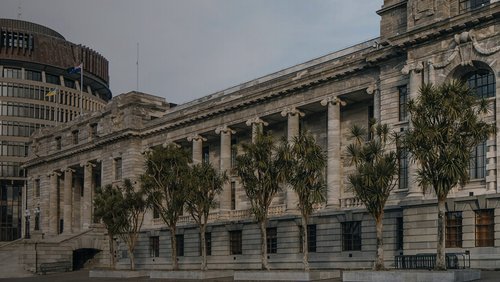18 Jan 2022
It’s time to accelerate your climate action. Our profession needs to drive change – like many firms already, you too can step up to the challenge.
It’s time to accelerate your climate action
Without reducing our global footprint, we have an estimated 7.5 years left till we use up our global emissions budget to remain under 1.5 degrees (25 years if aiming for 2 degrees). These estimates are based on present annual emissions, and increased rates of emitting could further reduce the limited time that we have.
Read That’s how fast the carbon clock is ticking
We are seeing the impact of warming already. 2021 was one of the 7 warmest years ever observed, and the warmest on record for Aotearoa. But, it is the increase in frequency and severity of extreme weather events and their effects – not the increase in average temperature – that should be the focus of our concern.
Read The past seven years have been the hottest in recorded history, new data shows
Read 2021 officially New Zealand’s hottest year on record, NIWA says
Our profession needs to drive change
We must prioritise addressing climate risks within our roles, seizing every opportunity to mitigate, transition and/or adapt to climate change. What this looks like will differ depending on your discipline, projects, clients, and local context. We know you will not always find this to be clear cut.
To help you, we're developing case studies, a new practice note, client facing resources, and collective position statements for advocacy. Watch this space. We're also planning to bring you drop-in pan-engineering “climate conversations”.
Firms are beginning to step up to the challenge – and you can too
In late 2021, WSP NZ announced they'll halve the carbon footprint of infrastructure designs and advice provided to clients by 2030. They'll work with their public and private sector clients in building, transport, water, and power projects to address building and infrastructure-related emissions right throughout the process. We're thrilled with this announcement.
Read WSP in New Zealand commits to major new climate pledge
Construction of our built environment is estimated to contribute 20 percent of global carbon emissions, with the operation of buildings and infrastructure relating to another 30 percent. Recognising this, it's encouraging to see engineering organisations stepping up to the challenge of addressing climate change and transitioning our society to a low carbon economy.
What can you do to help accelerate climate action?
With our new programme, Engineering Climate Action, our aim is to help you lead the way to a healthier, sustainable Aotearoa.
Engineering practice, as well as thought leadership and advocacy, are at the heart of Engineering Climate Action. We've begun developing resources for you to help you take action.




